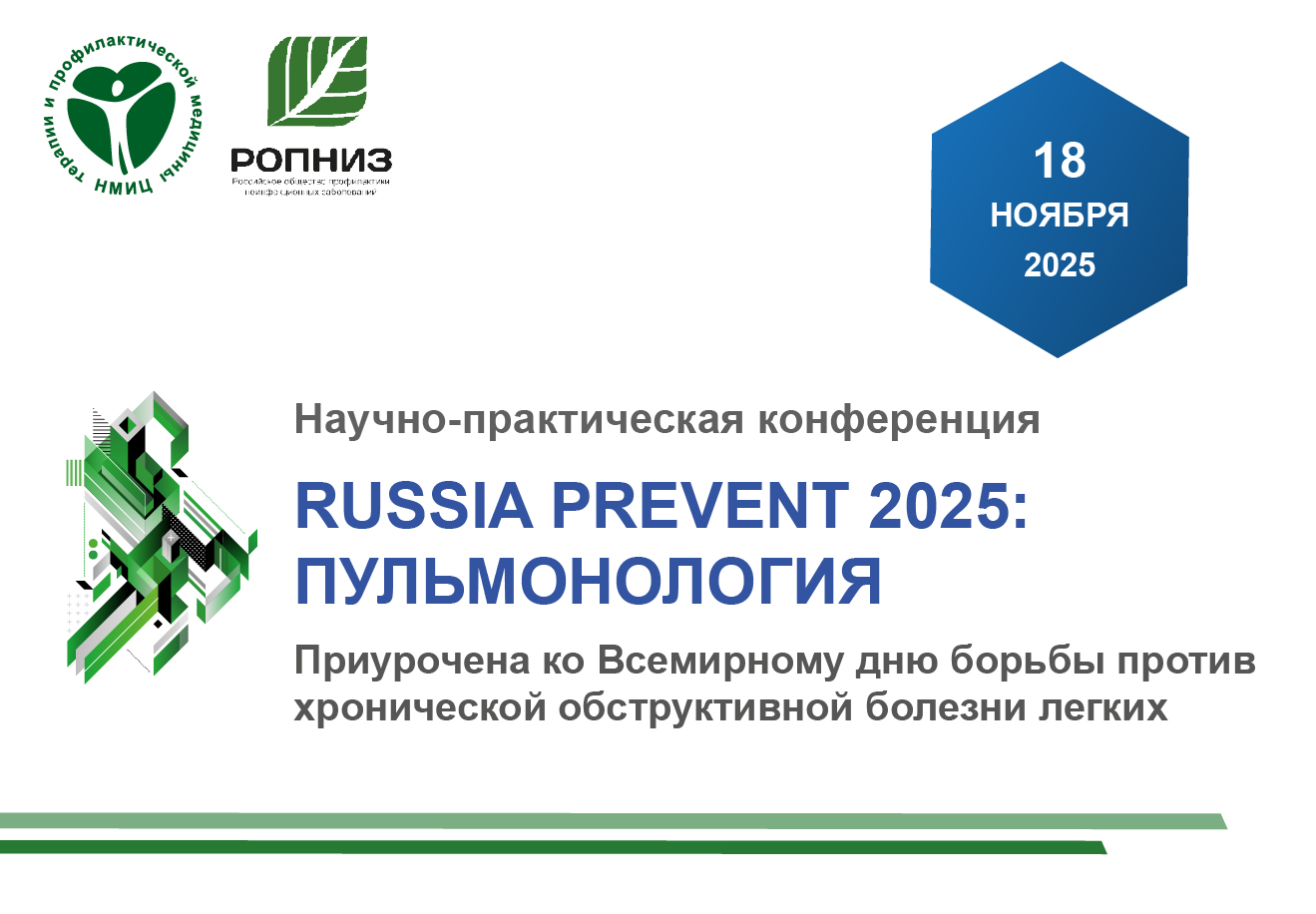Fluvoxamine effectiveness in patients with various atrial fibrillations forms
Abstract
Aim. To assess the effectiveness of depressive disorder (DD) treatment with fluvoxamine in patients with various forms of atrial fibrillation (AF), as well as to investigate fluvoxamine effects on AF clinical course. Material and methods. Group I included 51 patients with various forms of AF and DD, receiving fluvoxamine (50 mg once a day) for 6 months. Group II included 49 patients with AF and non-treated DD (comparison group). All participants received standard antiarrythmic therapy. At 6 months, the incidence of AF attacks and transition from tachycardic to normocardic AF, blood levels of fibrinogen, and depression severity (CES-D questionnaire) were assessed. Results. Three AF patients were withdrawn from fluvoxamine therapy at Week 1, due to adverse effects. In the other Group I patients (n=48), fluvoxamine reduced DD severity by 2,8 points on average (p<0,01). Fluvoxamine treatment was also associated with reduced AF attack incidence in 48,3±9,3 % of the patients with paroxysmal and persistent AF (p<0,01), and transition from tachycardic to normocardic AF in 47,4±11,5 % of the patients with permanent AF (p<0,05). The beneficial clinical effect (reduced DD severity, decreased AF attack incidence, reduced fibrinogen levels) was maximal in patients with paroxysmal and persistent AF, and minimal in patients with permanent AF, possibly due to more advanced heart failure and more severe clinical course of the disease. Conclusion. An antidepressant fluvoxamine reduces DD severity in AF patients and improves the clinical course of various AF forms.
About the Authors
R. V. GorenkovRussian Federation
O. G. Dvorina
Russian Federation
Yu. M. Pozdnyakov
Russian Federation
Yu. P. Zinchenko
Russian Federation
References
1. Feinberg WM, Blackshear JL, Laupacis A, et al. Prevalence, age distribution, and gender of patients with atrial fibrillation. Analysis and implications. Arch Intern Med 1995; 155: 469-73.
2. Kannel W, Wolf P, Benjamin E, et al. Prevalence, incidence, prognosis, and predisposing conditions for atrial fibrillation: population-based estimates. Am J Cardiol 1998; 82: 2N-9.
3. Go AS, Hylek EM, Phillips KA, et al. Prevalence of diagnosed atrial fibrillation in adults: national implications for rhythm management and stroke prevention: the AnTicoagulation and Risk Factors in Atrial Fibrillation (ATRIA) Study. JAMA 2001; 285: 2370-5.
4. Krahn AD, Manfreda J, Tate RB, et al. The natural history of atrial fibrillation: incidence, risk factors, and prognosis in the Manitoba follow-up study. Am J Med 1995; 98: 476-84.
5. Кушаковский М.С. Фибрилляция предсердий (причины, механизмы, клинические формы, лечение и профилактика). Санкт-Петербург 1999; 175 c.
6. Березин Ф.Б. Психофизиологические соотношения у больных с постоянной формой мерцательной аритмии. Тер архив 1986; 11: 83-5.
7. Недоступ А.В., Соловьева А.Д., Санькова Т.А. Психосоматические соотношения у больных с пароксизмальной формой мерцательной аритмии. Тер архив 2001; 9: 55-61.
8. Яковенко Т.В., Шубик Ю.В., Костюк Г.П., Крятова Т.В. Структура и динамика нозогенных психических реакций у больных с различными формами фибрилляции предсердий. Вестн аритмол 2006; 44: 26-9.
9. Ломакин В.В., Копылов Ф.Ю., Никитина Ю.М. и др. Психосоматические особенности течения фибрилляции предсердий. Кардиология и серд-сосуд хир 2009; 2(1): 61-6.
10. Скурихина О.Н., Миллер О.Н. Уровень тревоги и депрессии у пациентов с пароксизмальной и постоянной формами фибрилляции предсердий. Вестн аритм 2009; 55: 14-8.
11. Jiang W, Krishman RR, O’Connor CM. Depression and heart disease: evidence of a link, and its therapeutic implications. CNS Drugs 2002; 16 (2): 111-27.
12. Дробижев М.Ю., Добровольский А.В., Долецкий А.А. Кардиологические и психопатологические аспекты безопасности комбинированной кардио- и психотропной терапии. Психиат психофармакотер 2005; 3(7): 132-7.
13. Вознесенская Т.Г. Депрессия в неврологической практике. Трудн пац 2003; 1(2): 26-30.
14. Wholey MA, Simon GE. Managing depression in medical outpatients. Wew Enge J Med 2000; 343: 1942-50.
15. Малин Д.И., Медведев В.М. Побочные действия антидепрессантов. Психиат психофармакотер 2004; 4(5): 190-3.
16. Жариков М.Н. Новый селективный ингибитор обратного захвата серотонина циталопрам (ципрамил) в лечении депрессивных расстройств у больных диабетом. Психиат психофармакотер 2001; 1: 25-8.
17. Иванов С.В. Совместимость психотропных и соматотропных средств. Cons med 2002; Прилож.: 10-3.
18. Краснов В.Н. Депрессии в общей медицинской практике. Психиат психофармакотер 2002; 5: 181-3.
19. Смулевич А.Б., Дробижев М.Ю. Депрессии в общей медицине (определение, распространенность, клиника, лечение). Сердце 2007; 5(37): 272-6.
20. Татарский Б.А., Бисерова И.Н. Использование афобазола при лечении пароксизмальной формы фибрилляции предсердий. РМЖ 2007; 15 (9): 760-6.
21. Васюк Ю.А., Довженко Т.В., Школьник Е.Л. Депрессия и хроническая сердечная недостаточность при сердечнососудистых заболеваниях. Москва: Анахарсис 2006; 112 с.
22. Оганов Р.Г. Материалы симпозиума “Депрессии в кардиологии: больше, чем фактор риска”. Российский национальный конгресс кардиологов. Москва 2003; 1-4.
Review
For citations:
Gorenkov R.V., Dvorina O.G., Pozdnyakov Yu.M., Zinchenko Yu.P. Fluvoxamine effectiveness in patients with various atrial fibrillations forms. Cardiovascular Therapy and Prevention. 2010;9(7):49-55. (In Russ.)
























































